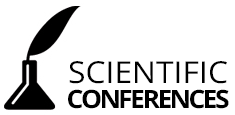It is hard to underestimate the significance of human-computer interaction in modern society. For the last century linguistics and especially natural language processing has become one of the leading scientific branches. NLP has significantly influenced the development of modern science and contributed to it with theoretical results and practical applications. As computers and Internet are becoming even more and more affordable all over the world, the importance of robust, fast and user-friendly user interfaces becomes more pronounced. And since natural language is the most effective, effortless and natural way of interaction, its potential and perspective in human-computer interaction is of great importance. NLP is becoming a solution to bridge the gap between human communication and digital data. Morphological analysis is one of the crucial steps in natural language processing. It involves the identification and analysis of the structure of a given language's morphemes. One of the most relevant problems on the stage of morphological analysis and POS-tagging is ambiguity. Ambiguity is one of the most crucial problems in the natural language processing.
RULE-BASED METHODS OF THE HOMONYMY DISAMBIGUATION IN THE UKRAINIAN LANGUAGE TEXTS
Oksana Kunikevych (Lviv, Ukraine) | Download article
